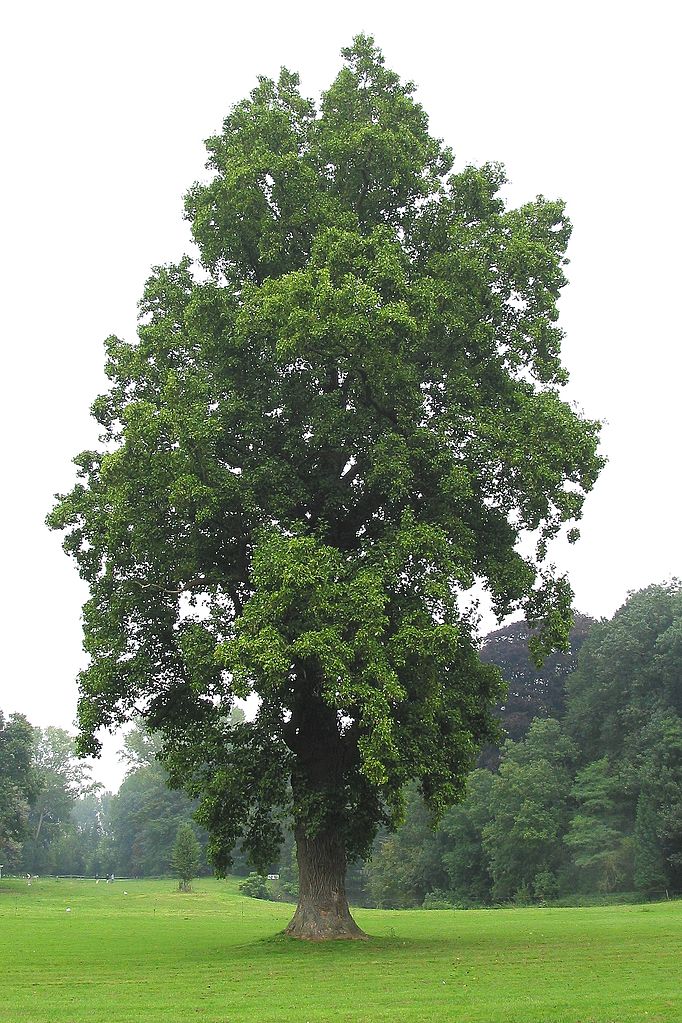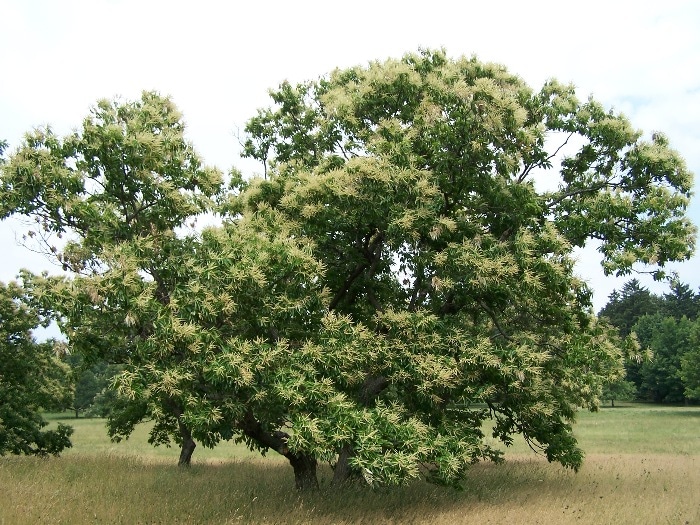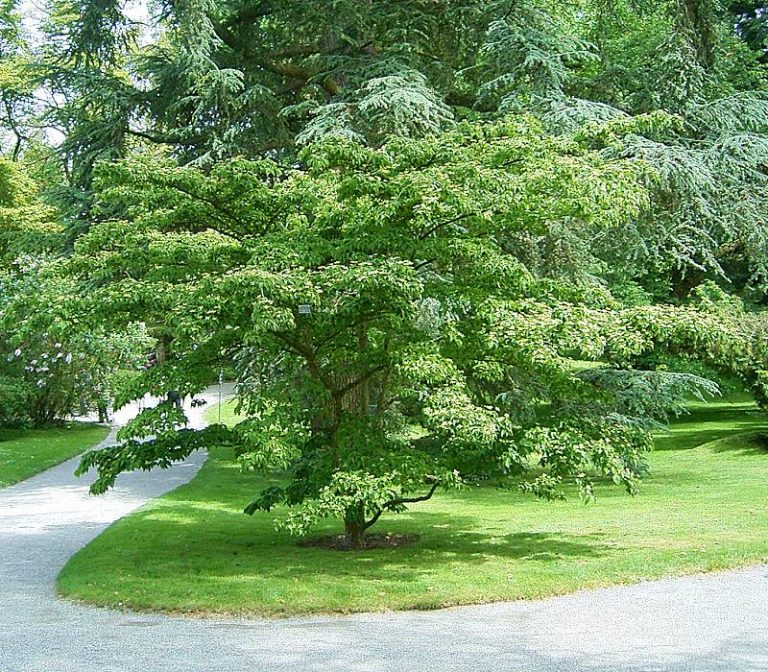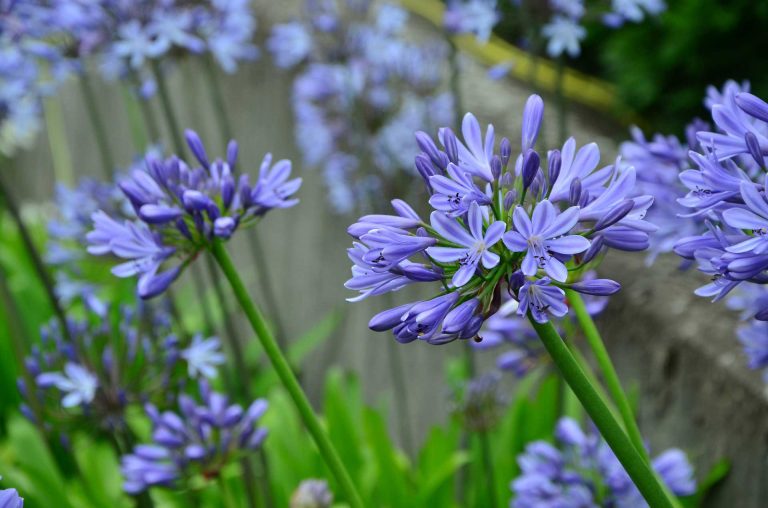Tulip Tree
Scientific classification
| Kingdom: | Plantae |
| (unranked): | Angiosperms |
| (unranked): | Magnoliids |
| Order: | Magnoliales |
| Family: | Magnoliaceae |
| Genus: | Liriodendron |
| Species: | L. tulipifera |
| Binomial name: | Liriodendron tulipifera |
Liriodendron is a genus of two species of typically huge deciduous trees that belong to the family Magnoliaceae (Magnoliaolia).
The tulip tree, Liriodendron Tulipifera, has many names, some of which are the American Tulip Tree, Tulip poplar, Tuliptree, and the Yellow Poplar, Fiddle-Tree and the White wood tree. They are, in fact, the representation of the dual-species genus, Liriodendron, in the western hemisphere. They are also the tallest hardwood in the Eastern region of North America, ranging from the south of Illinois and Ontario and on to Louisiana and Florida through New England. In the Appalachian Mountains, you can see them grow up to more than 165 feet or 50 meters in height, making a valuable contribution to the timber industry.
These trees are popularly called Tulip trees because of their big flowers that look somewhat like tulips. The resemblance ends there as they are not related to the tulips in any way. The Latin term Liriodendron literally means ‘lily tree’ Here again, any resemblance is of a superficial nature. Another name given to the tree is ‘yellow poplar’ or ‘Tulip Poplar’. The wood of the tree is simply called ‘poplar’. Here again, it is a misnomer, since these trees are not related to the real poplar trees. These trees are also called Saddle leaf tree, canoe wood tree and White wood trees.
The Tulip tree has the distinction of being ‘The State Tree’ of three American states, Indiana, Kentucky and Tennessee. Anatomy
There usually arises some confusion over the leaves of the Tulip and Maple trees. Both he trees have lobed leaves. Here ends the similarity and the differences are more pronounced. The leaf-tips of the tulip tree are notched. They have alternate branching along with pinnate veins. The Maple leaves have pointed tips, opposite branching and palmate veins.
Tulip trees grow in North America’s eastern regions. Many of the trees reach over Ninety feet in height. They are certainly tall and have straight trunks. The width of the canopy is less than half of the mature tree’s height. The tree branches start far up the trunk. These are usually symmetrical. It is very easy to identify the trees by the leaf’ shape. Instead of a ‘tip’ at the end of the leaves, there appears a concavity, as if someone took a bit of a bite. The fall foliage of the tulip leaves is yellow to golden in color. The flowers of the tree which somewhat resemble tulips, are colored yellowish-green, with a tinge of orange, outside.
Tulip trees are large. They often grow 18 to 32 meters. The diameter is around 60 to 120 cms. They have columnar trunks with the branchless boles that form compact, conical crowns of thin branches. The deep roots of the tree spread rather wide.
The tree, in its plant stage, has a pyramid shape. They mature to produce an arching dome, except in places where the sunlight is not enough. In such cases, the branches will be thin and weak.
When on plant stage, tulip trees have fleshy root systems that do not extend far from the plant. Ensure that you work the soil well before planting. The tree is not at all drought-resistant. Make sure that there is access to water. Otherwise, provide supplemental irrigation during summer and early autumn. The pH of the soil can vary from moderate to acidic.
Habitat
Tulip trees are native to eastern (North) America’s deciduous forests that extend to Canada’s south west Ontario region known as Carolinian Canada. It was in the 17th century that the Tulip trees were introduced to England from North America. Tulip trees are one of the two species of Liriodendron. . The other species are Liriodendron chinense, native to Vietnam as well as china.
GROWING AT HOME
Soil for Planting
You can grow the tulip tree where it is exposed to full or partial sunlight. The soil should be deep and well drained. Ensure that there is ample humus in the soil.
Planting
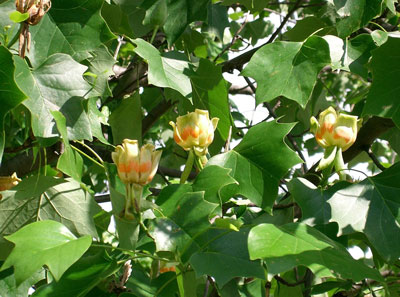
Photo by: KENPEI
Plant the Tulip tree in spring. Planting in the Fall may not be a good idea for this sensitive tree. For the tree to be robust, make sure that you regularly water the plants for at least the first three years. This will help to establish the roots properly.
When you plant the tree, do not allow the roots to dry out. Damage can occur when the tree is being planted. Keep root pruning to the minimum and make sure that the roots are damp. The chances of the tree’s survival increase if the roots are active and healthy. The hole you dig should be deep enough to accommodate all the roots. Ideally, the hole you dig must be twice the height and width of the root system of the plant.
Spread the roots out evenly in the hole. Surround the roots with dirt. Make sure that there are no air pockets. The roots will dry out if air pockets are present. Make sure that the roots are entirely covered. The stem should be above ground level. Pack the soil up to one inch of the stem, since the soil will compact and sink when you water the plant. The loose soil should be packed firmly around the roots.
Watering
Ensure that you water your young tulip trees in dry spells, especially in the summer months.
The branches droop when the tree does not get enough water or when it is over watered. So we have to take extra care. The tree should not suffer from lack of water, nor should they be over watered.
Flowering and Maturing
The flowering season of tulip trees in southern USA starts in April. The tulip trees in northern limits, start flowering in June. The pale green or yellow flowers have orange bands on the sepals. These flowers yield nectar in large quantities. Even the leaves have tulip shape and can grow up to eight inches in length.
You can find the trees in full bloom, during spring, in the south east and eastern parts of the of the United States. It is indeed a sight to behold! The yellowish green, orange-capped flowers are fragrant. The diameter of the flowers is around 2 to 3 inches. Naturally, the plants attract birds and pollinating insects.
Care
Taking care of the tulip tree is not a difficult task. Just be on the look out for pests and diseases. The young trees should be staked early and trained to a straight leader. Shape the tulip tree to have a centralized leader. Not much pruning is necessary. Pruning, if any, should be done in winter.
Tulip trees respond to fertilizers, well. Slow release fertilizer tablets are ideal to use in the first growing season. You need to use strong fertilizers after your trees get established. It is advisable to use 10-10-10 or 20-20-20 Miracle grow fertilizers. Fertilize the tulip tree twice a month before the tree comes out of dormancy, and once during the summer. You should stop fertilizing before the tree becomes dormant again.
Keep weeds and grass at a distance from the tree. They will compete for nutrients with your tree. In the initial stages, you can pull the weeds out manually. Later, you can opt for mulch or growing mats. Don’t spray pesticides on young trees. Make sure that chemical drift is not blown on the trees by the wind.
Pest and Pesticides
The tree is susceptible to canker diseases and attacks by poplar weevils. You can tackle weevils with horticultural oil. Use appropriate fungicide for the canker. Aphids and scale can also pose problems for the tree. The other diseases likely to affect the Tulip tree are, powdery mildew, leaf spots and (Verticillium) wilt. The leaves may turn yellow and fall off in hot weather.
To keep the tree healthy, prune out the branches that are infected. Leaf spots are rarely serious enough to warrant chemical controls Just rake up and destroy the infected leaves. Mildew is not usually harmful. They just create a powdery coating on the tree’ leaves.
Varieties
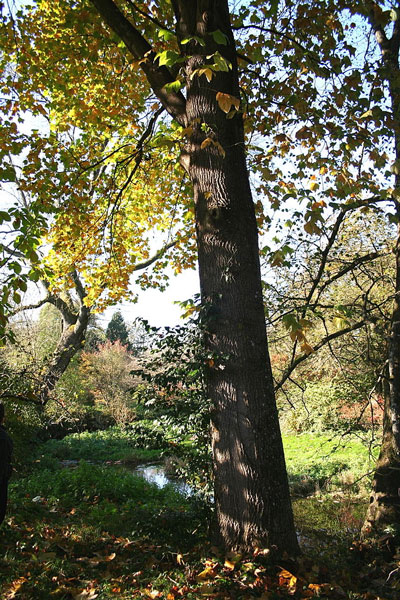
Photo by: Jean-Pol GRANDMONT
There are a lot of Tulip tree varieties to choose from. Amold varieties possess narrow column-like crowns. These trees flower early. Ardis is a shorter variety. The tree has shallow, lobed leaves. Fastigatum is similar to the Amold variety. Aureomarginatum has a variegated form with the leaves pale edged. They are called ‘Flashlight’ or ‘Majestic Beauty. The Integrifolium has leaves in which the lower lobes are absent. Florida Strain, on the other hand, grows fast and flower fast. They have blunt- lobed leaves. Leucanthum have flowers that are white or almost white. JFS-OZ, also known as ‘Emerald City’ has compact oval forms with dark and glossy leaves. ‘Little Volunteers” are as small as “Arids”, with more deeply lobed leaves. The ‘Roothan’ variety has blue-lobed leaves and the “Mediopictum” are a variegated form of the tree with yellow spots in the center of the leaves.
Uses of Tulip Tree Wood
Due to scarcity of softwoods, hardwoods like tulips are now increasingly used in the manufacture of furniture.
Tulip wood is also finding its way into the home construction industry, especially for bathroom and kitchen cabinets, while low grade wood of the tulip tree is used to make crates, shipping boxes, pallets, novelty products and toys.

Having discovered a fondness for insects while pursuing her degree in Biology, Randi Jones was quite bugged to know that people usually dismissed these little creatures as “creepy-crawlies”.

